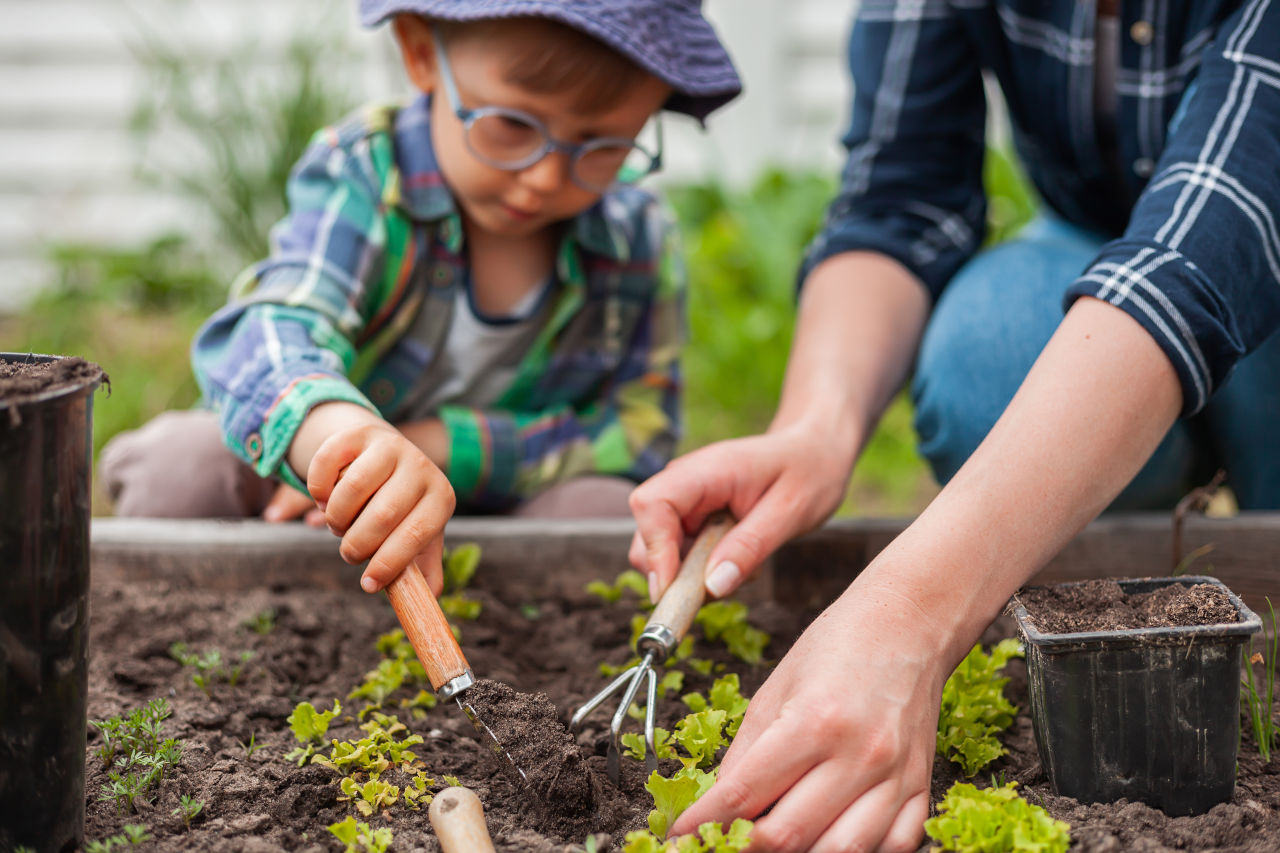Are "nature" schools possible in cities?
More than 80% of the French population lives in urban areas, and with it, the vast majority of schools. So how can we enable most students to benefit from these outdoor classes that are increasingly being talked about? Can nature-based schooling really become the educational revolution of the 21st century?

Sylvain Wagnon, University of Montpellier
This article was co-written with Corine Martel, educational advisor and director of the EducNatu’re center in Restinclières and lecturer at the Faculty of Education at the University of Montpellier.
First, let's remember that while the term "nature" implies a place where greenery prevails over concrete, it is also important to focus our attention on small green spaces and parks in the city. We must not forget that beneath the asphalt lies the earth.
Despite urban densification, nature is present around us all the time, whether in parks, shared gardens, trees lining avenues or planted on rooftops, and even in the sky, which is home to invisible biodiversity (bacteria, fungi, and yeast carried by water droplets). The current policy of greening urban spaces opens up new opportunities for teachers.
With the proliferation of strategic projects described as "nature cities," "green cities, " or "green and blue infrastructure," the aim is to develop more resilient cities and limit the consequences of global warming. In urban areas, this translates into reducing urban heat islands by planting trees or installing green roofs. All of these elements are levers and resources for outdoor schooling in the city.
Outdoor schooling in the city: a real need
The enthusiasm for outdoor schooling cannot be reduced to the period of health crisis and lockdown that we have experienced; teaching in nature and with nature is a necessity and a need. Indeed, beyond the idea of a nature deficit, studies clearly show the benefits of nature for mental balance, general health, and creativity—fundamental elements for a harmonious education that respects the needs and biological rhythms of children and adolescents.
Urban densification has clearly reduced the connection between humans and their environment. Combined with increasing sedentary lifestyles, confining children to cramped spaces, this trend has only widened the gap between young children and nature, even though they long to move, run, and enjoy recreational spaces.
In most subjects, curricula emphasize, particularly through environmental education, an understanding of the links between humans and nature. Marie Jacqué highlights the importance of teachers' diverse conceptions of nature. These may include representations of nature without humans: nature to be respected and preserved for its own sake. From this perspective, a sensitive approach to nature is favored.
But nature can also be understood as an ecosystem in terms of the relationships between living beings. This approach skillfully contributes to promoting cooperative teaching practices, peer exchanges, and mutual assistance.
In all cases, teachers who practice this type of outdoor education in cities choose to anchor their teaching as closely as possible to reality, so that their students can make observations in situ that will serve as a basis for classroom learning. Paradoxically, the impact of human construction can enable the observation of biodiversity consisting of refuges for certain animal and plant species following the destruction of natural spaces. This is how projects that support biodiversity can be developed in cities, such as Educational Land Areas or the ABCs of Biodiversity, and the E3D certification for schools and educational institutions.
This development is not limited to school hours, but also extends to extracurricular activities with the creation of adventure playgrounds, educational spaces that allow children to explore natural environments.
Walking class and greening
Field trips are one of the most iconic and obvious outdoor school activities. They are part of French school history and a living school. At the beginning ofthe 20th century, educators Élise and Célestin Freinet revived this activity and made it a key part of their teaching method, giving it a multidisciplinary focus and allowing children to take real ownership of their learning. These field trips are an opportunity to develop children's awareness of the environment and encourage them to experiment directly with nature. For the Freinets, this activity was a lever for radically transforming teaching and learning methods by developing mutual aid, sharing, and cooperation among children.
Today, it can be a tool for developing this school with nature in the city. Admittedly, administrative measures sometimes make it difficult for a class to go outside, but the aim is not to go far away, but rather to observe the nearby space where nature is present in all its forms.
The current trend toward greening school playgrounds is an opportunity to develop outdoor learning spaces within schools themselves. The benefits are not limited to creating flexible learning environments, but also include developing spaces that are more resilient to global warming. This also helps combat the risk of flooding in certain cities and creates corridors for animal species to move around.
Transitioning from an asphalt courtyard to a naturalized courtyard and bringing nature into the courtyard provides an opportunity to rethink teaching practices by creating a vegetable garden or other garden and implementing disciplinary or multidisciplinary projects at all levels of primary and secondary education. Easy access and the absence of specific administrative measures are all ways of transforming these green spaces into hubs for learning, with time for reading, math, or simply relaxing in nature during lunch breaks.
Transforming the way you teach requires fundamental reflection on what you want and can do. It is a velvet revolution in the sense that ultimately, these changes do not represent a break with his previous teaching, but rather a fluid and complementary process.![]()
Sylvain Wagnon, Professor of Education Sciences, Faculty of Education, University of Montpellier
This article is republished from The Conversation under a Creative Commons license. Readthe original article.